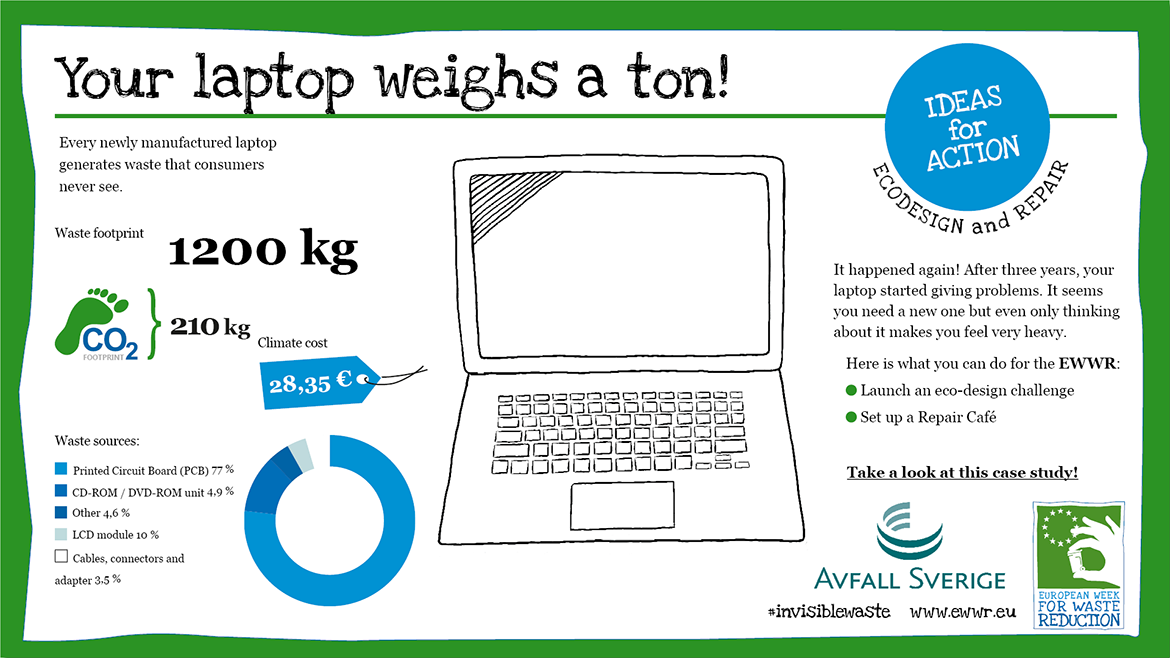In today’s throwaway society, it’s all too easy to buy goods as and when we need them and simply bin them once they’ve served their purpose.
A staggering amount of perfectly usable stuff ends up as waste – and it’s not just what we can see in the bin either.
What is invisible waste?
When we throw away a product – be it a toy, a t-shirt or a tomato – we’re wasting more than the product and the money we spent on it. We’re wasting all the effort that went into it: growing it or mining the materials to make it, manufacturing it, packaging it for sale, and transporting it to the shop or to our door.
A whopping four-fifths (80%) of Scotland’s carbon footprint comes from all the goods, materials and services which we produce, use and often throw out after just one use. What’s more, around half of those emissions are produced overseas in countries poorer and more polluting than Scotland. Not good news.

What can we do?
The first step is simply being aware of invisible waste and using that knowledge to inform our purchases. Why not ask yourself: ‘Do I really need this?’ before buying something new. Will it be valued and used regularly?
If not, borrowing the item from a tool library, neighbour, friend or relative would be more cost-effective and better for the environment – plus it won’t take up space indefinitely if you can give it back!
If you do need to buy, consider opting for second-hand. Doing so bypasses a whole host of emissions and it works both ways too – your old kit could have a new life somewhere else once you no longer need it. For added peace of mind look out for Revolve certified second-hand stores. It means that anything you buy will have been checked to meet high standards in quality and safety.
If buying new is the only option, go for something built to last. Investing in an item with a product guarantee and trusted repair service can save you money in the long run even if the initial purchase cost is higher.
When it comes to food, planning is one of the best things we can all do to make the most of the food we love – and save some pennies in the process. Combining a meal plan with simple actions like checking the fridge and cupboards before a shop, making a list, and using up leftovers can save good food from being binned because we haven’t used it in time.
Further information
To find out more about EWWR visit ewwr.eu.

